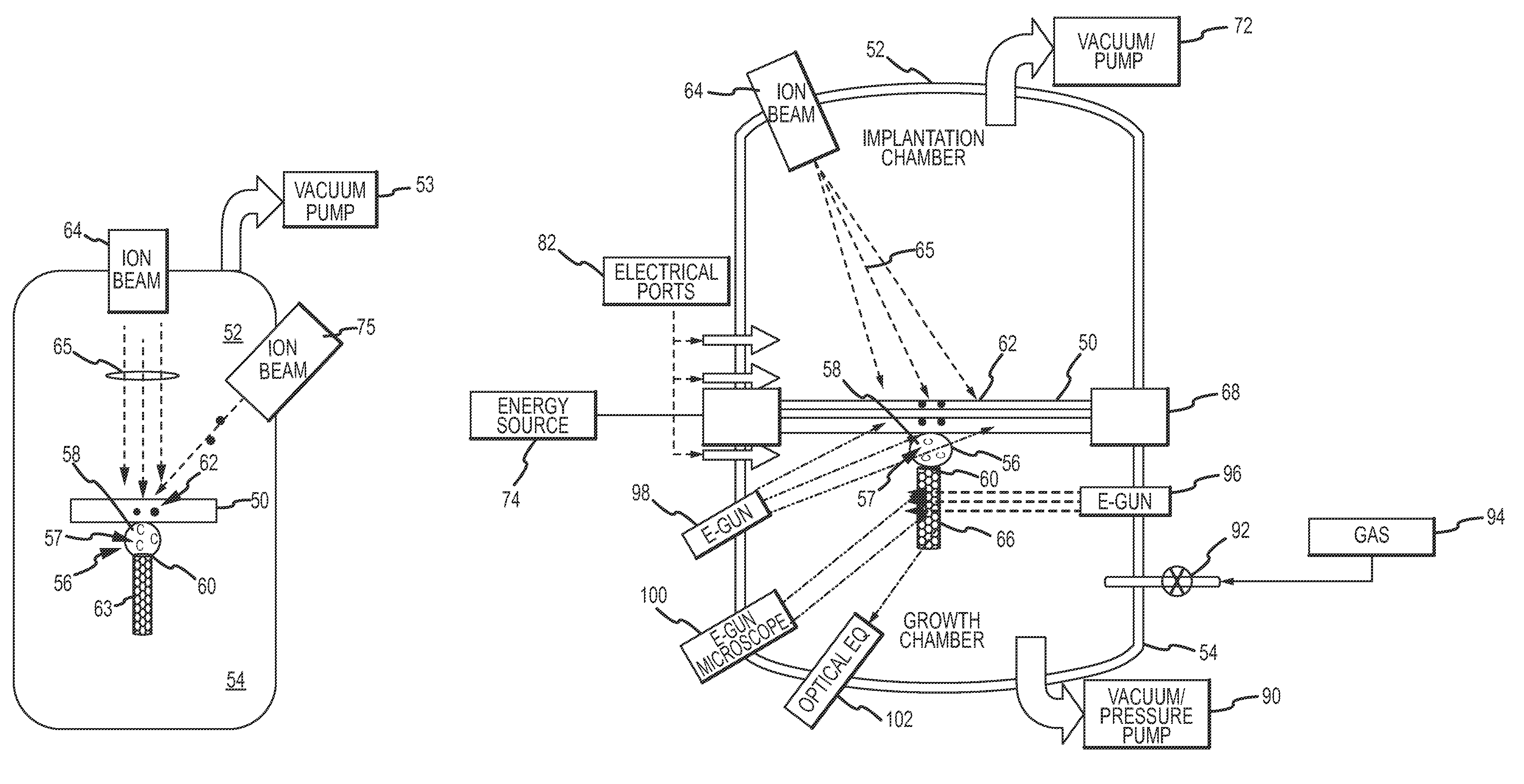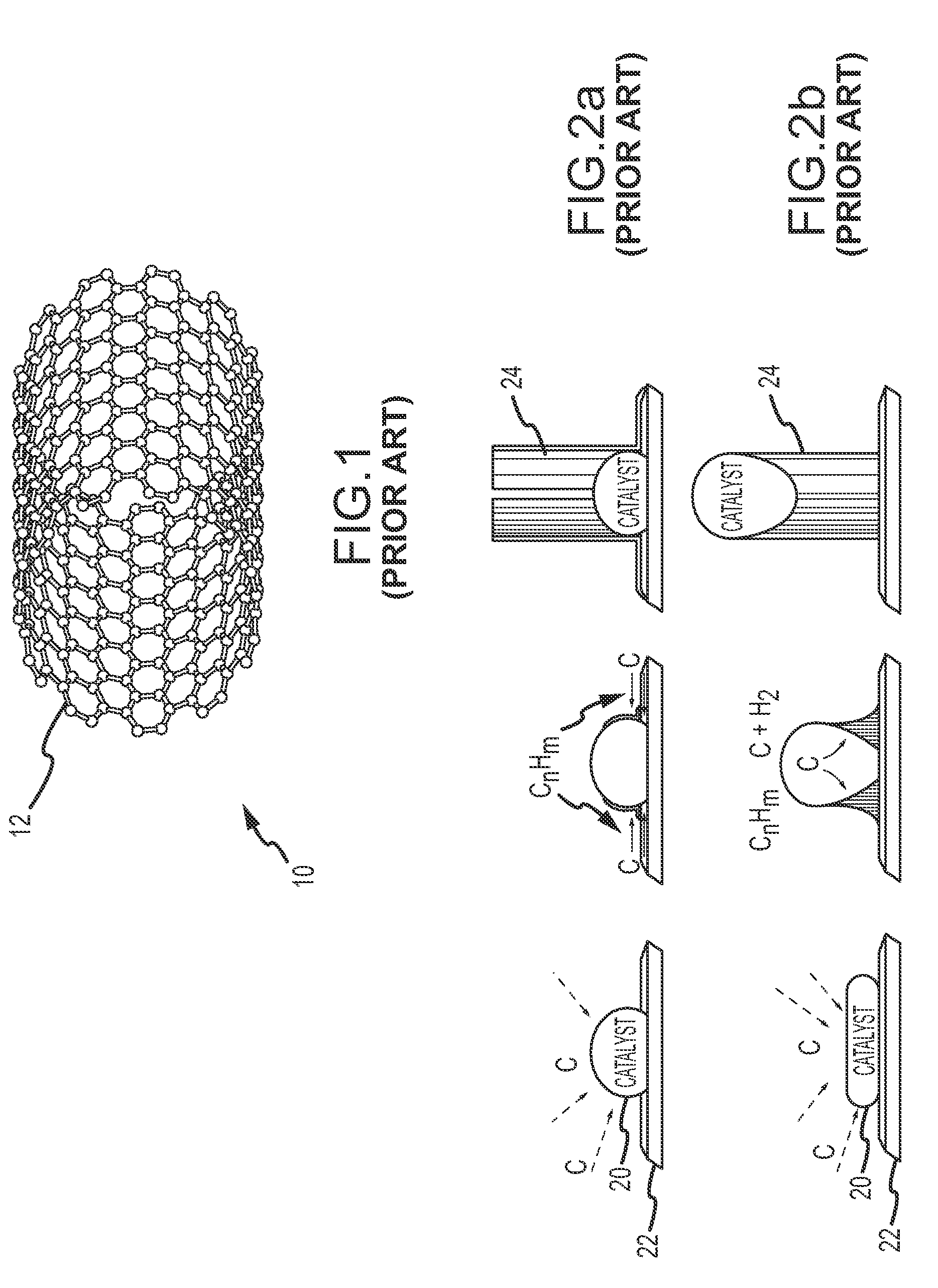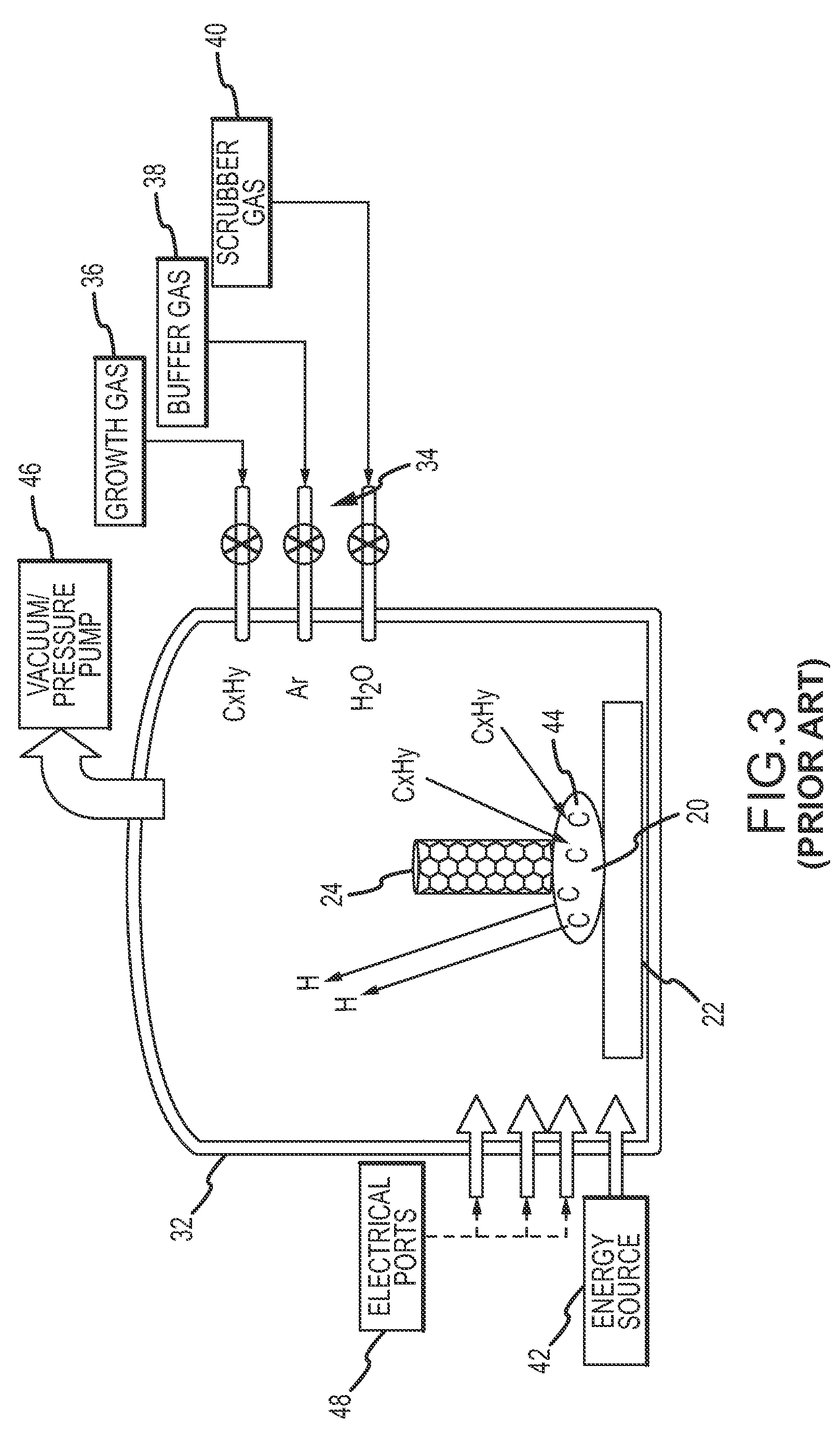System and method for nanotube growth via Ion implantation using a catalytic transmembrane
a technology of nanotubes and ion implantation, applied in the field of nanotubes, can solve the problems of generally poor quality mwnts or swnts of cvd, and achieve the effect of facilitating sustained growth of high quality nanotubes
- Summary
- Abstract
- Description
- Claims
- Application Information
AI Technical Summary
Benefits of technology
Problems solved by technology
Method used
Image
Examples
Embodiment Construction
[0027]Efforts to improve the growth of CNTs have revealed a number of drawbacks in the conventional CVD approach. The surface area of the catalytic particle for absorbing carbon atoms is limited by the desired geometry and growth of the CNT from the catalytic nano-particle. That is, the growing CNT covers most of the catalyst. To grow a SWNT the nano-particle must be very small, approximately 1-10 nm in diameter. The presence of the growing CNT further reduces the available surface area. Furthermore, the absorption process itself causes the surface of the catalytic nano-particle to become encrusted with amorphous carbon and graphite which slows and eventually stops absorption of feedstock carbon and growth of the CNT. The effectiveness of the scrubber gas to clean the surface of the nano-particle is limited because the scrubber gas tends to attack the CNT necessitating a lower concentration of scrubber gas. The conventional process cannot be sustained indefinitely, which places a li...
PUM
| Property | Measurement | Unit |
|---|---|---|
| densities | aaaaa | aaaaa |
| elastic modulus | aaaaa | aaaaa |
| elastic modulus | aaaaa | aaaaa |
Abstract
Description
Claims
Application Information
 Login to View More
Login to View More - R&D
- Intellectual Property
- Life Sciences
- Materials
- Tech Scout
- Unparalleled Data Quality
- Higher Quality Content
- 60% Fewer Hallucinations
Browse by: Latest US Patents, China's latest patents, Technical Efficacy Thesaurus, Application Domain, Technology Topic, Popular Technical Reports.
© 2025 PatSnap. All rights reserved.Legal|Privacy policy|Modern Slavery Act Transparency Statement|Sitemap|About US| Contact US: help@patsnap.com



